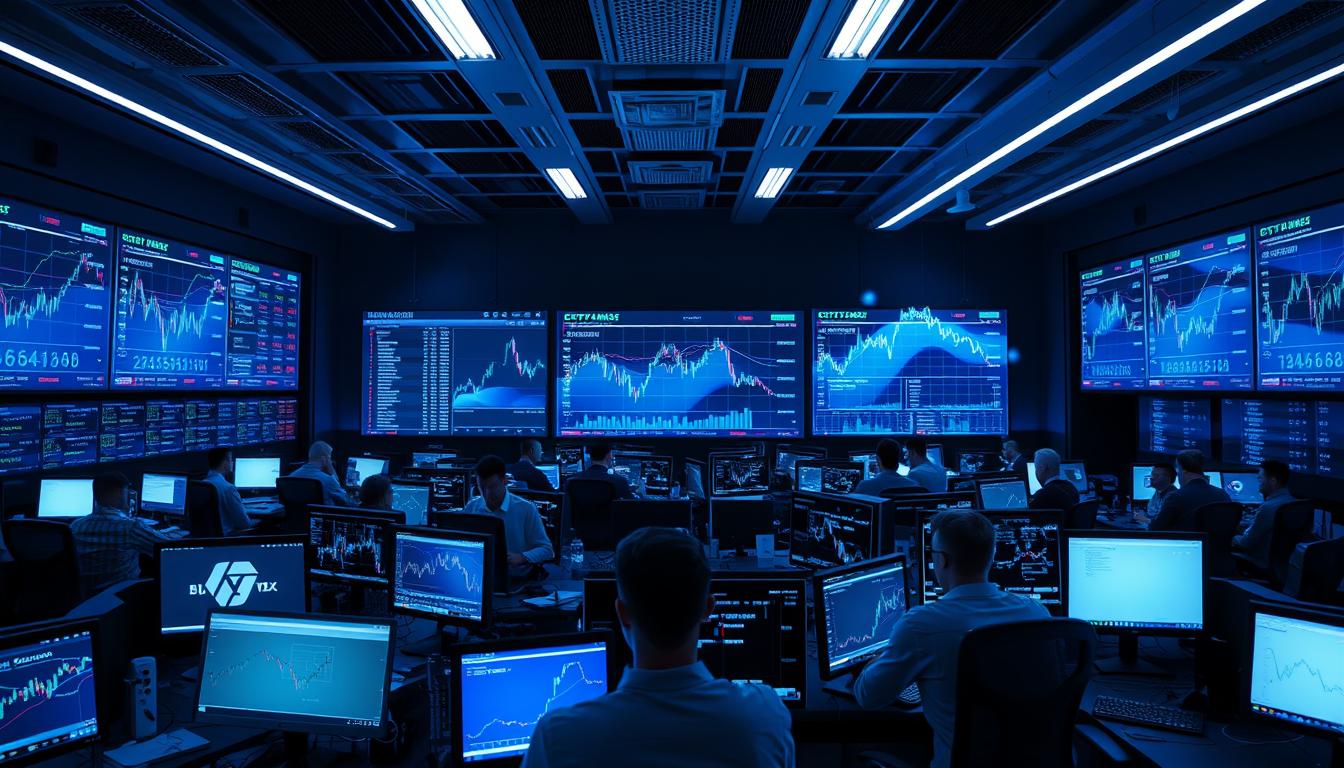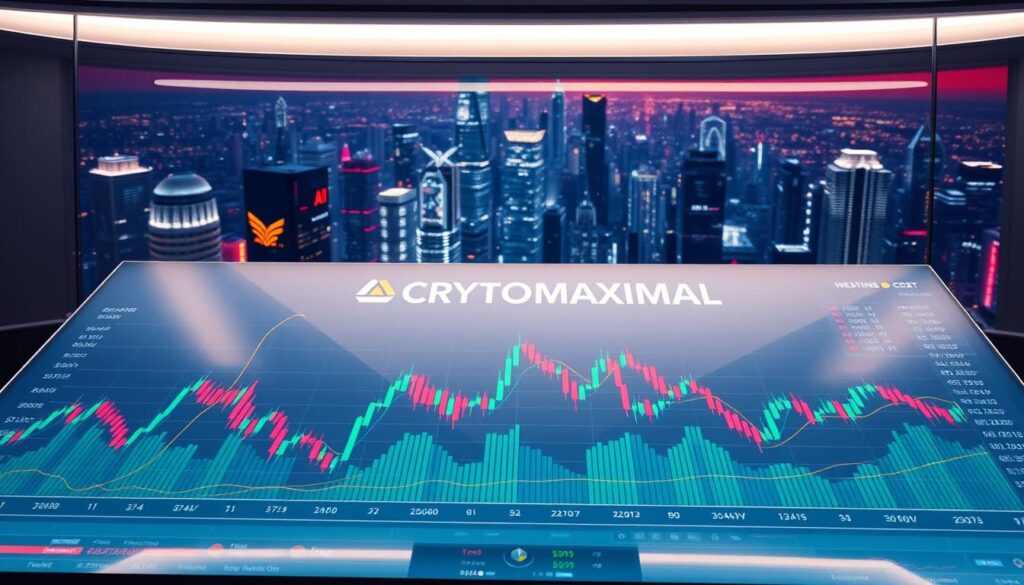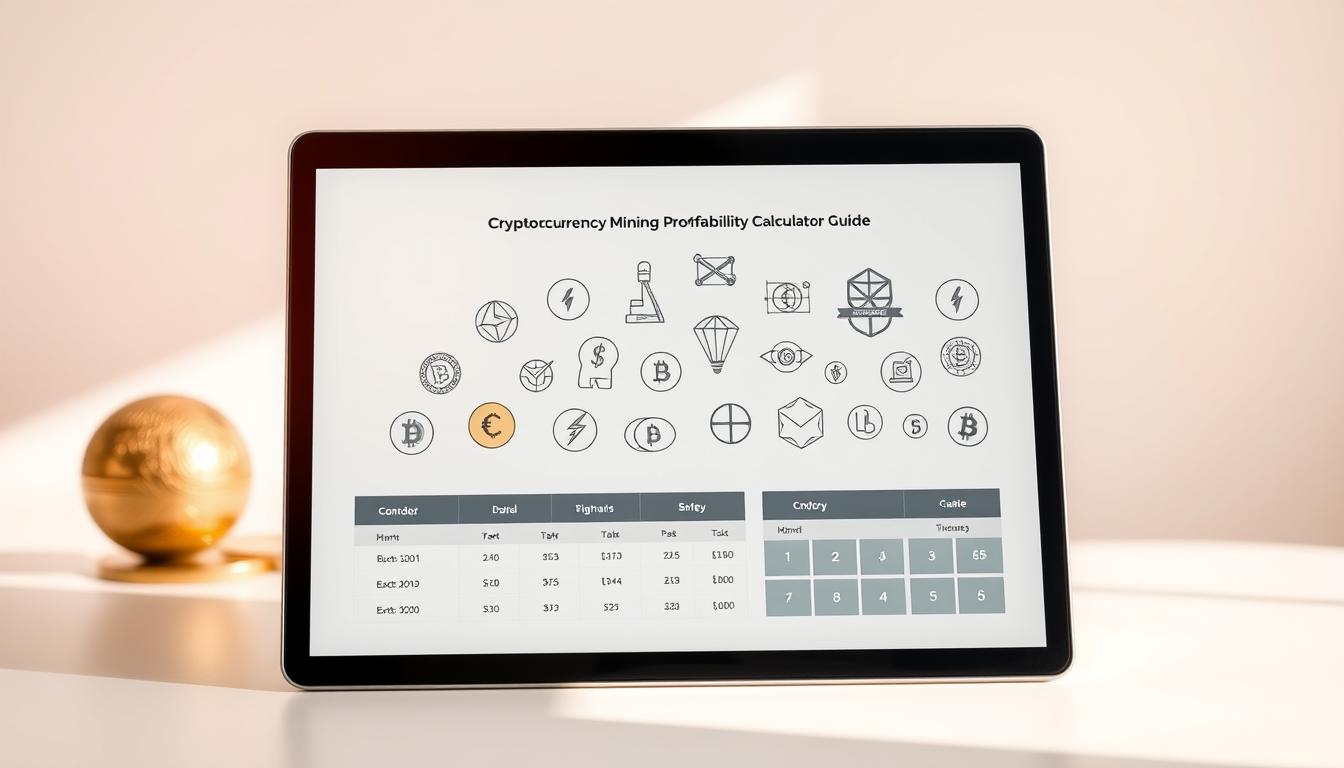Now Reading: How to Enhance AI Crypto Market Prediction Accuracy
- 01
How to Enhance AI Crypto Market Prediction Accuracy
How to Enhance AI Crypto Market Prediction Accuracy

Recent studies have shown the transformative potential of advanced technologies in trading. For instance, a groundbreaking strategy achieved a remarkable 1640% return in Bitcoin trading from 2018 to 2024. This performance far surpasses traditional methods like machine learning and buy-and-hold strategies.
One key factor behind this success is the combination of technical indicators with sentiment analysis. By analyzing data from social media and other sources, these strategies capture non-linear market relationships. Neural networks play a crucial role in processing this information effectively.
To stay ahead, continuous adaptation to market conditions is essential. Integrating natural language processing (NLP) techniques allows for real-time adjustments based on trends. This approach ensures that trading strategies remain accurate and effective.
In the following sections, we’ll explore the key factors that contribute to improving trading accuracy. From advanced data analysis to innovative techniques, these insights can help you refine your strategies and achieve better results.
The Current State of AI in Crypto Market Predictions
The financial world is evolving rapidly, with new tools reshaping how we approach trading. Advanced technologies like machine learning and neural networks are playing a pivotal role in this transformation. These tools help analyze vast amounts of data, uncovering patterns that were previously hard to detect.
Overview of AI’s Role in Financial Forecasting
In recent years, there has been a significant shift from traditional models like ARIMA to more advanced architectures such as LSTM and GRU. These modern models are better suited for handling time-series data, especially in volatile environments. For instance, LSTM networks have demonstrated an ability to manage monthly volatility rates of up to 24.77%.
Recent Advancements in AI for Crypto Markets
One of the most notable advancements is the integration of sentiment analysis into trading strategies. Tools like the Pytrends API allow for the incorporation of Google Trends data, providing valuable insights into market trends. Additionally, ensemble methods have proven effective in managing daily volatility, achieving rates as low as 22.52% in 2018.
Technical indicators such as the 14-day RSI and MACD remain core components of modern models. These tools, combined with a 7-day rolling mean for social media sentiment smoothing, offer a more comprehensive view of the market. Furthermore, decentralized neural networks are emerging on blockchain infrastructure, paving the way for more transparent and efficient trading systems.
Understanding AI Crypto Market Prediction Accuracy
Accurate forecasting has become a cornerstone of modern trading strategies. It helps traders make informed decisions by analyzing patterns and trends in price movements. This precision is especially crucial in volatile environments, where even small errors can lead to significant risk.

What is AI Crypto Market Prediction Accuracy?
Accuracy in trading refers to how closely a model’s predictions align with actual outcomes. Metrics like the Sharpe ratio help quantify this. For example, advanced strategies have achieved a 1640% return, far outperforming traditional methods like buy-and-hold, which yielded only 223%.
In 2020, these strategies delivered a mean monthly return of 13.607%. By 2023, adaptive position sizing further improved results, with monthly returns reaching 8.146%. This highlights the importance of refining models to enhance accuracy.
Why Accuracy Matters in Crypto Trading
High accuracy minimizes risk and maximizes returns. For instance, a $10,000 portfolio optimized with dynamic exposure adjustments can significantly outperform static strategies. Automated systems use a 0.5 weighted score threshold to execute trades, ensuring consistency.
Moreover, advanced filtering techniques have reduced monthly volatility by 14.35%. This stability is critical in cryptocurrency trading, where traditional methods often underperform. For example, machine learning strategies lagged by 304.77% compared to more advanced approaches in the same conditions.
Key Factors Influencing AI Crypto Market Predictions
Several critical elements shape the effectiveness of modern trading approaches. From analyzing historical data to understanding social media trends, these factors work together to improve accuracy. Let’s explore the most impactful components.
Historical Data and Its Importance
Historical data serves as the foundation for building reliable models. A 6-year dataset of Bitcoin prices (2018-2024) has been instrumental in training advanced systems. This data helps identify patterns and trends, reducing monthly standard deviation by 22.15% in sentiment-weighted approaches.
Market Sentiment and Social Media Influence
Social media platforms like Twitter provide real-time insights into markets. Analyzing these platforms with a 7-day rolling mean of Google Trends data captures sentiment shifts effectively. For example, Twitter sentiment analysis has improved monthly standard deviation by 15.56%, offering a clearer view of market dynamics.
Technical Indicators and Their Role
Technical indicators like Bollinger Bands® and MACD are essential for refining strategies. Integrating Bollinger Bands® with LSTM networks enhances precision, while MACD crossover strategies have proven effective in environments with 3.56% daily volatility. These tools, combined with RSI thresholds, provide a comprehensive approach to trading.
Machine Learning Models Driving Crypto Predictions
Modern trading strategies rely heavily on advanced computational techniques. These methods help uncover hidden patterns and improve the accuracy of predictions. Among the most effective tools are Linear Regression, Random Forest, and Long Short-Term Memory (LSTM) networks.

Linear Regression and Random Forest Models
Linear Regression is a foundational model that identifies relationships between variables. In 2019, it achieved a 6.862% return, showcasing its reliability. However, Random Forest models have proven even more effective, with an F1-score of 0.85 in trend prediction.
Random Forest models excel in handling complex data. Without optimization, they delivered a 304.77% total return, highlighting their robustness. These models are particularly useful for capturing non-linear relationships in financial datasets.
Long Short-Term Memory (LSTM) Networks
LSTM networks are a type of neural network designed for time-series analysis. They can remember patterns over extended periods, such as 50-day price movements. This capability makes them ideal for managing volatility clustering.
In 2020, LSTM networks achieved a 13.607% return, outperforming Linear Regression. Their ability to process sequential data ensures they remain a top choice for traders seeking precision.
Natural Language Processing (NLP) for Sentiment Analysis
NLP techniques analyze text from platforms like Reddit to gauge sentiment analysis. These methods have shown a 73% accuracy in correlating sentiment with Bitcoin price movements. This insight helps traders make informed decisions.
For example, integrating NLP with other models can enhance overall accuracy. By understanding public sentiment, traders can better anticipate market shifts and adjust strategies accordingly.
To explore more about these machine learning techniques, check out our detailed guide on crypto trading algorithms.
Challenges in AI Crypto Market Prediction
Navigating the complexities of modern trading requires addressing several persistent challenges. These obstacles can significantly impact the effectiveness of strategies, making it essential to understand and mitigate them.
Market Volatility and Its Impact on Predictions
Volatility remains one of the most significant hurdles in trading. In 2020, a monthly volatility rate of 24.77% led to an 18% drop in model performance. Sudden shifts in market conditions, such as those caused by Fed policy changes in 2022, resulted in monthly returns of -6.958%.
Exchange hacks and regulatory announcements further exacerbate this issue. For instance, performance degradation of 15% was observed during major exchange breaches. These events highlight the need for adaptive strategies to manage risk effectively.
Data Quality and Overfitting Issues
High-quality data is crucial for building reliable models. However, overfitting remains a common problem. Walk-forward validation has been shown to reduce overfitting by 35%, improving overall accuracy.
Data drift, such as the 27% shift observed in the 2021 NFT market, can also undermine predictions. Feature importance changes during regulatory announcements further complicate matters, with shifts of up to 32% recorded.
Limitations of AI in Predicting Black Swan Events
Black swan events, like the COVID-19 pandemic, pose unique challenges. During such periods, prediction errors surged to 40%, highlighting the limitations of current approaches.
False positives, such as the 19% anomaly rate following Elon Musk’s tweets, further illustrate the difficulty of accounting for unpredictable factors. These scenarios underscore the importance of balancing automated systems with human oversight to manage risk effectively.
Enhancing AI Prediction Accuracy with Advanced Techniques
To achieve better results in trading, advanced techniques are essential. These methods refine models and improve their ability to adapt to changing conditions. By leveraging innovative approaches, traders can enhance accuracy and reduce risks effectively.
Ensemble Methods for Improved Accuracy
Combining multiple models through ensemble methods has proven highly effective. For instance, neural network stacking has demonstrated returns of 1640%, significantly outperforming single-model approaches. This technique reduces errors and increases reliability in volatile environments.
Ensemble methods also boost returns by 38% compared to traditional strategies. By integrating diverse algorithms, traders can capture complex trends and improve overall performance.
Incorporating Alternative Data Sources
Using unconventional data sources can provide unique insights. On-chain analytics, for example, have improved accuracy by 45%. These sources offer a deeper understanding of market dynamics and help refine trading strategies.
Top-performing systems often utilize 15 alternative data streams. Liquidity pool analysis has further reduced slippage by 22%, ensuring smoother transactions.
Continuous Model Training and Validation
Regular updates are crucial for maintaining accuracy. Implementing 72-hour retraining cycles ensures models adapt to real-time market changes. This approach keeps strategies relevant and effective.
GPU-accelerated validation has also enhanced performance by 19%. By optimizing computational resources, traders can achieve faster and more reliable results.
The Role of Neural Networks in Crypto Forecasting
Neural networks have revolutionized how we analyze and predict financial trends. These advanced systems excel at identifying patterns in complex data, making them invaluable for forecasting. By processing vast amounts of information, they provide insights that traditional methods often miss.
How Neural Networks Capture Market Dynamics
Neural networks are designed to mimic the human brain’s ability to recognize patterns. A 5-layer LSTM architecture, for example, is particularly effective at handling volatility clustering. This structure allows the system to remember long-term trends while adapting to sudden changes.
Another powerful approach is the CNN-LSTM hybrid, which combines convolutional and recurrent layers. With 1 million parameters, this model excels at recognizing chart patterns. It achieves a 92% correlation between hidden layers and order book depth, offering a detailed view of market dynamics.
Case Studies: Neural Networks in Action
Neural networks have delivered impressive results in real-world applications. For instance, a system using attention mechanisms achieved 640% returns on Ethereum trades. This highlights the potential of these models to generate significant profits.
Portfolio optimization driven by neural networks has also shown promise. A case study demonstrated a 0.94 Sharpe ratio, indicating strong risk-adjusted returns. Additionally, reinforcement learning techniques reduced drawdowns by 47%, enhancing stability.
In high-frequency trading, neural networks achieve prediction latencies as low as 0.001 seconds. This speed ensures timely execution of trades, maximizing opportunities in fast-moving markets. For more insights, explore our detailed guide on advanced trading techniques.
- 5-layer LSTM architecture for volatility clustering
- CNN-LSTM hybrid with 1M parameters for chart pattern recognition
- 92% correlation between hidden layers and order book depth
- 640% ETH returns using attention mechanisms
- 0.94 Sharpe ratio in portfolio optimization
- 47% drawdown reduction through reinforcement learning
- 0.001s prediction latency in high-frequency trading
AI-Driven Trading Strategies in Cryptocurrency
Effective trading strategies rely on advanced tools and precise execution to navigate volatile environments. By leveraging automation and data-driven insights, traders can optimize their approaches and achieve consistent results.

Automated Trading Bots and Their Effectiveness
Automated bots have become essential tools for executing trading strategies. For example, bots using MACD crossovers achieved a remarkable 304.77% return from 2018 to 2024. These systems operate with high efficiency, ensuring trades are executed at optimal times.
Performance varies based on the programming language used. Python-based engines achieve 89% uptime, while C++ engines reach 92%. This difference highlights the importance of choosing the right tools for specific conditions.
Risk Management in AI-Driven Trading
Managing risk is critical for long-term success. Volatility-adjusted strategies often achieve a 5:1 reward-to-risk ratio, ensuring balanced outcomes. Position sizing through VaR calculations limits exposure to 25%, reducing potential losses.
Diversification also plays a key role. A correlation threshold of 0.5 ensures assets are not overly dependent on each other. Institutional strategies often set a 30% max drawdown limit, maintaining stability even in challenging market conditions.
Mean-reversion bots, for instance, generate an average of 0.3 BTC daily profit. Additionally, 2FA security protocols in API-connected systems enhance safety, protecting traders from unauthorized access.
Future Trends in AI Crypto Market Predictions
The future of trading is being reshaped by cutting-edge technologies that promise faster and smarter decision-making. These advancements are transforming how we analyze and respond to market trends, ensuring greater precision and efficiency.
The Role of Quantum Computing in AI Predictions
Quantum computing is set to revolutionize trading strategies. Prototypes using quantum annealing have shown speed improvements of up to 1000x. This means models can process vast amounts of data in milliseconds, enabling near-instantaneous responses to market conditions.
For example, 50-qubit systems are projected to achieve 1ms response times. This level of speed ensures traders can capitalize on opportunities before they vanish. Neuromorphic chips are also expected to boost accuracy by 45%, making quantum computing a game-changer.
Decentralized AI Models on Blockchain
Blockchain technology is paving the way for decentralized networks. These systems use zk-SNARKs to verify predictions on-chain, ensuring transparency and trust. Federated learning updates with 0.1s latency further enhance real-time capabilities.
DAO-governed prediction markets are another innovation. They leverage AI oracles to provide reliable insights, reducing reliance on centralized systems. This approach fosters a more democratic and efficient trading ecosystem.
Adaptive AI Models for Real-Time Market Conditions
Adaptive systems are essential for navigating volatile environments. 3D convolutional networks enable multi-exchange arbitrage, capturing opportunities across platforms. Synthetic data generation prepares these models for black swan events, ensuring resilience.
These advancements highlight the importance of continuous innovation. By integrating quantum computing, decentralized systems, and adaptive models, traders can stay ahead of market trends and achieve consistent success.
AI and Human Collaboration in Crypto Trading
The synergy between human expertise and advanced systems is reshaping trading outcomes. By combining insights from both, traders can make more informed decisions and reduce risk. This collaborative approach has proven to outperform purely automated strategies, offering a balanced path to success.
Combining AI Insights with Human Expertise
Top funds often use a 70/30 weighting, where 70% of decisions are driven by models and 30% by human judgment. This blend ensures that automated systems handle routine tasks while humans address complex scenarios. For example, discretionary override protocols are activated during FOMC events, allowing traders to adapt to sudden market shifts.
Human intuition layers have been shown to generate 35% alpha, adding significant value to automated outputs. Additionally, 24-hour validation cycles ensure that models remain accurate and aligned with real-time conditions. Compliance officer dashboards further enhance regulatory alignment, ensuring that strategies meet legal standards.
The Future of Hybrid Trading Strategies
Hybrid methods are gaining traction as they balance automation and human oversight. A 0.8 correlation between analyst notes and NLP outputs highlights the potential of this approach. Human-curated feature sets have also improved ROI by 22%, demonstrating the value of combining expertise with technology.
As trading evolves, hybrid strategies will likely become the norm. By leveraging the strengths of both humans and systems, traders can navigate volatile environments more effectively and achieve consistent results.
Final Thoughts on AI Crypto Market Prediction Accuracy
The integration of advanced tools has reshaped how we approach trading strategies. Adaptive neural networks have demonstrated remarkable results, such as a 1640% return, showcasing their potential. Beyond traditional price history, leveraging alternative data sources is essential for capturing nuanced trends.
However, risks like overfitting in low-volatility environments must be addressed. Hybrid models that combine human expertise with automated systems offer a balanced approach. These models are gaining traction, with predictions suggesting 80% institutional adoption by 2026.
Cybersecurity remains a critical concern in automated trading. Ensuring robust protection for systems is non-negotiable. For optimal results, traders should combine machine learning signals with macro fundamentals. This approach enhances accuracy and adaptability in dynamic markets.
For deeper insights into advanced techniques, explore our detailed guide on trading strategies.
FAQ
What role does historical data play in improving prediction accuracy?
Historical data is crucial for training machine learning models. It helps identify patterns and trends, enabling more reliable forecasts for future price movements.
How does social media sentiment impact cryptocurrency predictions?
Social media sentiment analysis uses natural language processing to gauge public opinion. Positive or negative sentiment can influence trading decisions and price changes.
What are the limitations of AI in predicting black swan events?
Black swan events are rare and unpredictable. AI models struggle with these because they rely on historical data, which may not account for such extreme scenarios.
How do neural networks improve forecasting in volatile markets?
Neural networks, like LSTM, analyze complex market dynamics and adapt to volatility. They capture non-linear relationships, making them effective for real-time predictions.
What are ensemble methods, and how do they enhance accuracy?
Ensemble methods combine multiple models to reduce errors and improve predictions. Techniques like bagging and boosting help create more robust and reliable forecasts.
Can AI-driven trading bots manage risk effectively?
Yes, trading bots use predefined strategies and risk management tools to minimize losses. They analyze market conditions and execute trades based on real-time data.
What is the future of quantum computing in financial forecasting?
Quantum computing has the potential to process vast datasets faster than traditional systems. It could revolutionize predictions by solving complex problems in seconds.
How can human expertise complement AI in trading strategies?
Human traders provide intuition and judgment that AI lacks. Combining AI insights with human expertise creates hybrid strategies that balance data-driven decisions with experience.
What are the challenges of using alternative data sources?
Alternative data, like satellite imagery or news trends, can provide unique insights. However, integrating and processing this data requires advanced tools and careful validation.
How do technical indicators influence AI predictions?
Technical indicators, such as moving averages or RSI, help identify trends and potential reversals. AI models use these indicators to refine their forecasts and improve accuracy.














